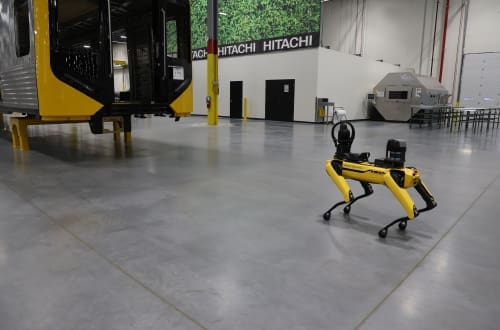- Servicios
Soluciones tecnológicas
Soluciones tecnológicas- Estrategia de Producto y Diseño de ExperienciaDefine cadenas de valor impulsadas por software, crea interacciones con propósito y desarrolla nuevos segmentos y ofertas.
- Transformación Digital de NegociosAvance en su viaje hacia la transformación digital.
- Ingeniería InteligenteUtiliza datos e IA para transformar productos, operaciones y resultados.
- Ingeniería de Productos de SoftwareAcelera la entrega de productos, plataformas y servicios.
- Modernización TecnológicaIncrementa la eficiencia y agilidad con sistemas y aplicaciones modernizados.
- Ingeniería Integrada + Transformación IT/OTConstruye y logra mantener software de chip a nube para productos conectados.
- Industrias
- GlobalLogic VelocityAI
- Perspectivas
Blogsnoviembre 9, 2024Gabriel ArangoExpansión sin fronteras: Cómo la IA revoluciona los negocios y ...
La inteligencia artificial generativa pasa a ser parte como un pilar fundamental de la ...
 Blogsseptiembre 2, 2024Gabriel Arango
Blogsseptiembre 2, 2024Gabriel ArangoOpen Banking: Innovaciones relacionadas al banking en el sector ...
Open Banking, powered by Generative Artificial Intelligence (GenAI), is redefining the ...

- Acerca de
Press ReleaseGlobalLogicseptiembre 24, 2025Hitachi ha acordado adquirir synvert, la empresa alemana de ...
Fortaleciendo las capacidades de datos y consultoría de GlobalLogic y ampliando su pres...
 Press ReleaseGlobalLogicseptiembre 10, 2025
Press ReleaseGlobalLogicseptiembre 10, 2025GlobalLogic y Ericsson implementan una red 5G privada en la ...
La nueva infraestructura es la columna vertebral digital de la planta de Hagerstown, q...

- Carreras
Redefiniendo industrias resolviendo sus desafíos únicos.
BlogsBlogsBlogsBlogsBlogsBlogsBlogsBlogsBlogsBlogs








